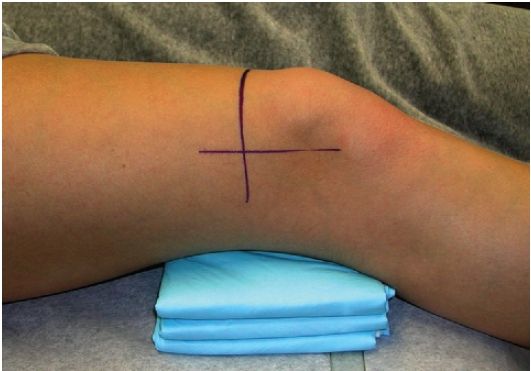FIGURE 8.15 Lateral aspect of the right knee showing the extent of the knee joint capsule (in purple). (Adapted from Tank PW, Gest TR. Lippincott Williams & Wilkins Atlas of Anatomy. Philadelphia, PA: Lippincott Williams & Wilkins, 2009.)
PATIENT POSITION
- Lying supine on the examination table with the knee extended, or slightly flexed and supported with folded towels or chucks pads as needed for patient comfort.
- Rotate the patient’s head away from the side that is being injected. This minimizes anxiety and pain perception.
LANDMARKS
1. With the patient lying supine on the examination table, the clinician stands lateral to the affected knee.
2. Locate the superior aspect of the patella.
3. Draw a line vertically 1 cm superior to the proximal margin of the patella (Fig. 8.16).
4. Next, draw a line horizontally along the posterior edge of the patella.
5. Identify the point where these two lines intersect.
6. At that site, press firmly on the skin with the retracted tip of a ballpoint pen. This indention represents the entry point for the needle.
7. After the landmarks are identified, the patient should not move the knee.

FIGURE 8.16 Lateral aspect of the right knee with lines drawn.
ANESTHESIA
- Local anesthesia of the skin using topical vapocoolant spray.
- (Optional) Local anesthesia and vasoconstriction of the skin and soft tissues may be augmented using an injection of up to 10 mL of 1% lidocaine with epinephrine (see “Pearls”).
EQUIPMENT
- (Optional) 10-mL syringe—for local tissue anesthesia
- 20- to 60-mL syringe—for aspiration
- 5-mL syringe—for injection of the anesthetic/corticosteroid mixture
- (Optional) 25-gauge, 1½ in. needle—for local tissue anesthesia
- 18-gauge, 1½ in. needle—for aspiration
- (Optional) 10 mL of 1% lidocaine with epinephrine—for local tissue anesthesia
- 3 mL of 1% lidocaine without epinephrine—to dilute the corticosteroid
- 1 mL of the corticosteroid solution (40 mg of triamcinolone acetonide)
- Viscosupplementation agent of choice—if indicated
- One alcohol prep pad
- Two povidone–iodine prep pads
- Sterile gauze pads
- Sterile adhesive bandage
- Nonsterile, clean chucks pad
TECHNIQUE
1. (Optional) Use ultrasound to image the knee joint structures using an adjacent, but separate, acoustic window (Fig. 8.17). This allows separate imaging from the injection site so that there is no contamination from the ultrasound gel. Alternatively, the entire site may be prepped in an aseptic manner and sterile ultrasound gel utilized (Fig. 8.18).
2. Create an aseptic insertion site by wiping with a single alcohol prep pad followed by two 10% povidone–iodine prep pads. Allow this site to completely dry by evaporation.
3. Achieve good local anesthesia by using topical vapocoolant spray.
4. (Optional) Using the no-touch technique, introduce the 25-gauge, 1½ in. needle for local anesthesia at the insertion site. Inject up to 10 mL of 1% lidocaine with epinephrine to provide adequate local anesthesia. Deposit the anesthetic under the skin, in the soft tissue at the joint capsule, and over the periosteum.
5. Position the 18-gauge, 1½ in. needle and syringe perpendicularly to the skin, parallel to the floor, at a right angle to the other two previously drawn skin lines and with the tip of the needle directed medially.
6. Using the aseptic, no-touch technique, quickly introduce that needle at the insertion site.
7. Advance the needle under the quadriceps tendon and toward the anterior surface of the distal femur until the needle tip is located in the joint capsule. Apply suction to the syringe while advancing the needle. The appearance of fluid in the syringe confirms that the joint capsule has been entered (Fig. 8.19). If fluid is aspirated, stop advancing the needle. The needle may contact the distal femur itself. Should that happen, withdraw the needle a few centimeters and advance the needle as needed to “walk” it over the femur and into the joint capsule.
8. Multiple syringes may be required in order to drain all of the synovial fluid if a large effusion is present.
9. If injection following aspiration is elected, remove the large syringe from the 18-gauge needle and then attach the 5-mL syringe filled with the anesthetic/steroid solution (Fig. 8.20) or a proprietary glass syringe prefilled with viscosupplement (Fig. 8.21).
10. Inject the anesthetic/steroid solution as a bolus into the knee joint capsule. The injected solution should flow smoothly into the joint space. If increased resistance is encountered, advance or withdraw the needle slightly, and confirm aspiration of a small amount of joint fluid before attempting further injection (Fig. 8.20).
11. Following injection of the corticosteroid solution or viscosupplement, withdraw the needle.
12. Apply a sterile adhesive bandage.
13. Instruct the patient to move his or her knee through its full range of motion. This movement distributes the steroid solution throughout the knee joint.
14. Reexamine the knee in 5 min to confirm pain relief.





